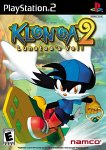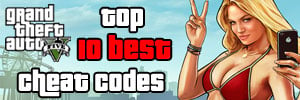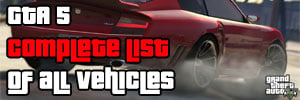FAQ - Guide for Klonoa 2
- Cheats |
- Unlockables |
- Hints |
- Easter Eggs |
- Glitches |
- Guides
Scroll down to read our guide named "FAQ" for Klonoa 2 on PlayStation 2 (PS2), or click the above links for more cheats.

Kaze no Klonoa 2 - Sekai ga Nozonda Wasuremono -
(Namco, quasi-3D platform game, PSX2)
Secrets FAQ (Frequently Asked Questions)
V1.0 4/17/01
Written by: Richard Uyeyama (ru e ama best com)*
* Instances of the letter "y", the "at" symbol, and all periods have been
removed (replaced with spaces) from the above e-mail address in order to
prevent unscrupulous UCE (unsolicited commercial e-mail) bot processes
from adding to the amount of e-mail I already get...
The latest version of this file can be found at:
Dreaming of Lunatea...
http://www.best.com/~ruyeyama/psx2/dol.html
Document formatting, organization, and wording Copyright 2001 by
Richard Uyeyama.
Permission granted by author to duplicate (unaltered) this document in its
entirety for NON-PROFIT purposes only. All other rights reserved. Author
reserves the right to rescind specific or general permission, if he sees a
reason (such as loophole abuse) to do so. Unauthorized duplication of
this document is a violation of all applicable national and international
laws.
This document is protected by International Copyright Law. It is a
criminal act to use this document (or any derivative work (including
translations)) in any way that makes you (and/or your company) money; you
MAY NOT sell this document, host this document on a website with an ad
banner and/or membership fee, give this document away as a "purchase
bonus", and/or use this document in any other manner which profits
(financially) you (and/or your company) either directly or indirectly.
If you are unsure as to whether you can use this document, or if you wish
to apply for specific rights not granted to you by the above, send a
polite, detailed, and clearly phrased inquiry to me at the e-mail address
listed above. Note, however, that due to the amount of e-mail I get, I
may not be able to reply to every query or request I receive (also note
that the lack of a reply will NEVER constitute legal permission).
GameFAQs (www.gamefaqs.com) has been granted permission to host this
document.
The following webpage contains the most recent version of the above
copyright notice. If there is a discrepancy between the above copyright
notice and the one located on my current webpage, the information on my
webpage will be treated as authentic:
http://www.best.com/~ruyeyama/faqlegal.html
Kaze no Klonoa 2: Sekai ga Nozonda Wasuremono is Copyright 1997, 2000 by
Namco, Ltd. All rights reserved.
Table of Contents:
0. Document History
I. Basic Stuff
1. What is this document?
2. What's new in Klonoa2 (compared to Klonoa1)?
II. Collecting Stuff
1. What do I get for collecting the puzzle pieces?
A. The Tower stages are hard! Do I get anything for finishing them?
2. What do I get for collecting gems?
III. Miscellany
1. Does it make a difference which Joilant/Volk stage I choose first?
2. So... what's this about Momet House?
A. Can Momet unlock more than one thing at a time?
3. And what's this about using Popka as a Support Character?
A. Is there any disadvantage to using Popka as a Support Character?
4. Is there anything else you want to mention?
-------------------
0. Document History
-------------------
V1.0: 4/17/01
Launch version
(3/22/01: Kaze no Klonoa 2: Sekai ga Nozonda Wasuremono now on sale)
--------------
I. Basic Stuff
--------------
I.1 What is this document?
This document is an English language informational resource for Kaze
no Klonoa 2: Sekai ga Nozonda Wasuremono (which I shall hereafter refer to
simply as Klonoa2, for brevity's sake), a PlayStation2 quasi-3D platform
game by Namco (and the sequel to the PlayStation quasi-3D platform game
Kaze no Klonoa: Door to Phantomile (which I shall hereafter refer to
simply as Klonoa1)).
In this document, I'll be covering secrets, details, clarifications,
and other such information which may be of interest to Klonoa2 fans. This
is a Secrets FAQ, and not a strategy guide, btw, so I won't be including
basic game mechanics, or level/boss strategies, or tips on maximizing your
gem count, or anything like that in this document...
This document was written for the J version of Klonoa2, currently the
only version of the game. If/when an English version is produced, it will
most likely (but not necessarily) be called "Klonoa 2: Lunatea's Veil".
Kaze no Klonoa 2: Sekai ga Nozonda Wasuremono (PSX2, J) basic info:
1 DVD ROM Disc (SLPS-25033)
1 Player
Works with: PlayStation2 8MB Memory Card (370 KB)
6800 (y)en
I.2 What's new in Klonoa2 (compared to Klonoa1)?
New world (the Klonoa2 story takes place in Lunatea, as opposed to
Phantomile), new companions (Lolo and Popka), and some new creatures,
enemies, and objects (with new properties and abilities).
Klonoa only has 3 health points, instead of 6.
New view: overhead. Used when Klonoa is lifted/tossed extremely high
into the air and/or has a long way to fall.
New stage type: Float Board stages. The Float Board is kind of like
a snowboard (or surfboard) that can be used on a variety of fluid
surfaces. Views in Float Board stages include: side view, back view, and
yes, even front view. In Float Board stages, Klonoa cannot stop his
forward movement, but can slow it down or speed it up a bit; in front and
back views, he can also move from side to side. The Float Board will pop
item bubbles when it passes through them (i.e. you don't necessarily have
to shoot them).
Maximum gem count records *are* kept from the initial completion of
each stage.
Stages *can* be replayed without first having to complete the game at
least once.
Support Character mode. If you have a controller plugged into the P2
slot, you can use Popka in a limited way as a support character. See the
"Support Character" section of this document for more information.
Two Extra stages (Towers), instead of just one. See the "puzzle
pieces" section of this document for more information.
Boss battle time attack mode. See the "Momet House" section of this
document for more information.
There are some other new things as well, but those are the major
differences...
--------------------
II. Collecting Stuff
--------------------
II.1 What do I get for collecting the puzzle pieces?
If you collect all 6 pieces in a stage (you can press R1 to check on
your progress during a stage (the puzzle shown is not a representation of
*which* pieces you've collected, btw; it just indicates how many)), you'll
earn a Momet Doll for that stage. Momet Dolls that you've earned will be
displayed in a bookcase to the right of your Vision summary/select list
(press R1 at the stage select map). If you collect any 8 (or more) Momet
Dolls, Momet will open the attraction "Joy Joy Tower" (i.e. the first
Extra stage) for you. If you collect all 16 Momet Dolls, Momet will open
the attraction "Horror Horror Tower" (i.e. the second Extra stage) for
you. These two attractions will be located to the right and left,
respectively, of Momet House on the stage select map.
II.1.A The Tower stages are hard! Do I get anything for finishing them?
Yep. Once you complete either Tower, Momet will give you a "Concert
Hall" (i.e. music player) option in Momet House, with tracks 00-27.
Completing the other Tower will then earn you tracks 28-54. The music in
the Concert Hall will play in relay mode, btw, so once the music player
gets done with one track, it'll automatically proceed to the next; so
really, it's kind of like having a music CD on auto-repeat... =)
In addition, completing Joy Joy Tower will earn you a silver trophy,
which will be displayed on the left side of the top of the bookcase. And
completing Horror Horror Tower will earn you a gold trophy, which will be
displayed on the right side of the top of the bookcase.
Time Attack high scores (fastest completion time for each) for the
two Towers will be recorded, and displayed on the stage select map (move
Klonoa to a Tower to see the high score for that Tower).
II.2 What do I get for collecting gems?
Every time the gem counter passes 99, you earn an extra life.
Also, for every stage you earn 150 or more gems on, a new picture in
the Memorial Gallery (located at Momet House) will be released. The
maximum gem count you've earned for each stage will be listed on the
Vision summary/select list on your status summary screen (press R1 at the
stage select map). In order to obtain a gem count of 150, proper use of
the mirror spirits is essential. Note that it is possible to obtain more
than 150 on some (but not all) of the stages...
There are a total of 19 pictures in the Memorial Gallery. The
gallery starts out initially with picture 1. Pictures 2 through 19 will
be released in order, regardless of what order you choose to complete
(with 150 or more gems) the 18 stages (16 normal, and 2 Tower stages) in.
---------------
III. Miscellany
---------------
III.1 Does it make a difference which Joilant/Volk stage I choose first?
Not really. The ending sequence (story) for the stage will differ
slightly, depending upon which you choose first (there are two basic
endings (for each pair of stages), one for whichever stage is completed
first, and one for whichever is completed second), but that's about all.
Note that whichever ending gets assigned to a stage will remain
assigned to that stage for any subsequent time you replay that stage (on
your continuing game)...
Regardless of which stages you do first, the complete Vision summary
list will always have the stages listed in a standard order, which places
the Joilant amusement park stage before the waterslide stage, and the Volk
underground stage before the aboveground stage.
III.2 So... what's this about Momet House?
Momet House is where most of the extras in the game will be found.
Momet House will become available on the stage select map after you defeat
Leptio, the Flower Clown (i.e. the Joilant boss battle). It will be
located South (down) of the central plaza of Joilant, and is easily
distinguishable because it will be marked with, of all things, a mustache
(Momet's mustache).
Initially, Momet House will start with two options: a Boss Time
Attack and a Memorial Gallery.
Initially, the Boss Time Attack will start with two bosses; a total
of six can be earned (a boss will be added to the list after you've
defeated it in the main story). After you've recorded Time Attack scores
for all six bosses, a Total Time score will also be listed in the upper
left of the Time Attack boss select screen.
See the "collecting gems" section of this document for more
information on the Memorial Gallery.
After you've completed at least one of the Tower stages, a Concert
Hall (music player) option will also become available in Momet House (see
the "puzzle pieces" section of this document for more information).
III.2.A Can Momet unlock more than one thing at a time?
Alas, no. So if you earn more than one thing before visiting Momet,
multiple visits (after entering, exit, enter again, and repeat as
necessary) may be needed.
Each time you earn a new feature from Momet, there will be a special
sequence (Momet congratulates you) when you enter Momet House. So if
there is no such intro sequence, that means you've unlocked everything
Momet currently owes you.
III.3 And what's this about using Popka as a Support Character?
If you have a controller plugged into the P2 slot, you can use Popka
in a limited way as a support character. I think this was intended as a
feature to help out the younger players of the game (by having a friend or
parent assist him/her).
Anyway, during gameplay, if you press the START button on the P2
controller, Popka will appear on screen, and begin following Klonoa around
(if you press the START button again, Popka will leave). You will not
have any direct control over Popka's movements, but if you press the
[square] button, Popka will give Klonoa a Support Jump, a super jump that
will lift Klonoa a little higher (if I'm not mistaken) than a normal
double jump would. In order to prevent excessive abuse, giving Klonoa a
Support Jump will also dizzy Popka for a little while, during which time
he can't do anything.
The Support Jump can be used at almost any time (for example, it
won't work if Klonoa is hanging onto a Gumi). So by utilizing Popka, you
can do such things as reaching a jumping height twice as high as normal
(double jump, then Support Jump), or bringing a captured creature
somewhere you're not supposed to have one (use a Support Jump to clear an
obstacle, where normally you'd have to double jump (and use the captured
creature)).
Using Popka as a support character can make things a lot easier, but
since the game really is designed to be completed without his help, you
may want to complete the game at least once the normal way (P1 controller
only) before making use of Popka.
Note: By utilizing Popka, it is possible, on some stages, to get a
higher max gem count than normal.
ERRATUM - The manual incorrectly states that you can use either the
[square] or O button on the P2 controller to give Klonoa a Support Jump.
Please note that the O button will *not* work to initiate a Support Jump;
you'll have to use the [square] button.
III.3.A Is there any disadvantage to using Popka as a Support Character?
Actually, yes, there is. Any Time Attack score (Boss Time Attack,
and the two Towers) will be disregarded if Popka is used during the Time
Attack stage/battle. Note: Popka can accompany Klonoa, but if he gives
Klonoa a Support Jump, the time counter changes from white to green, and
the time score will not be counted for the purposes of the Time Attack
high score (fastest time).
Using Popka doesn't seem to (negatively) affect anything else. So,
for example, even if you use Popka on the Tower stages, you'll still be
able to release the Concert Hall, and earn the two trophies.
III.4 Is there anything else you want to mention?
Sure. Here follow a few miscellaneous notes and comments which will
hopefully be of interest or note to at least some of you...
Vision Select - After you've completed the game at least once, you'll
be able to select (and play) stages without having to travel to them on
the stage select map. Just call up the Status screen (press R1), and you
should find that the Vision summary list has become a "Vision Selector"
option. Select a stage with the d-pad, and press O to begin. When
complete, the Vision Select list should include: 16 normal stages, 2 Tower
stages, and Momet House.
L1/L2 actions - If any of you were wondering, these don't have any
real impact on gameplay. They're mainly there just for aesthetic value.
Klonoa has a maximum of two L1/L2 actions at any particular time.
Rikuri notes - The rikuri is a crystalline creature that looks sort
of like a fish. By hitting another creature with a captured rikuri, the
rikuri will return to you and mutate one step in the following sequence:
normal - yellow - blue - red - red - (disappears). A rikuri of a
particular color (yellow, blue, or red) can be used to destroy a crystal
of the same color.
Note: I have successfully used a red rikuri to destroy a blue
crystal, so it's probable that red rikuri can be used against red, blue,
or yellow crystals, and that blue rikuri can be used against blue or
yellow crystals.
Note on romanization: I don't know what the "official" spelling of
"rikuri" is, so I'm using the standard romanization of the katakana.
Maximum lives - The maximum number of extra lives you can have at any
particular time is 99.
Save slot markings - The save slot for your continuing game will be
marked with a Book icon once you've completed one of two tasks: a) finish
the game at least once, or b) get 150 or more gems on all 18 stages. Once
you've completed both of these tasks, your save slot will also be marked
with a Ring icon.
The five kingdoms of Lunatea - In case anybody was wondering, here
are the representative concepts of the five kingdoms of Lunatea:
yasuragi (serenity/peace)
yorokobi (joy/happiness)
ikari (aggression/anger)
madoi (confusion/delusion)
kanashimi (sorrow/sadness)
Character names - And if anybody's interested, here's a list of the
main characters in the story, and their official name-spellings, based
upon the in-game text, the Memorial Gallery, the Concert Hall, and the
Klonoa2 pages on the Namco (Japan) website (www.namco.co.jp):
Klonoa
Lolo
Popka
Leorina
Tat
Yogensha Baguji (Baguji the Wiseman)
Momet
Kanashimi no Oh (King of Sorrow)
Note: "Wise man" should technically be two words, but since it's
printed as one word in the Concert Hall, that's how I'm listing it above;
"Sage" and "Seer" are also good words for "Yogensha".
------------------------------------------------
The latest version of this file can be found at:
Dreaming of Lunatea...
http://www.best.com/~ruyeyama/psx2/dol.html
------------------------------------------------
(eof)



